Sheet Metal Fabrication Guides: A Comprehensive Resource
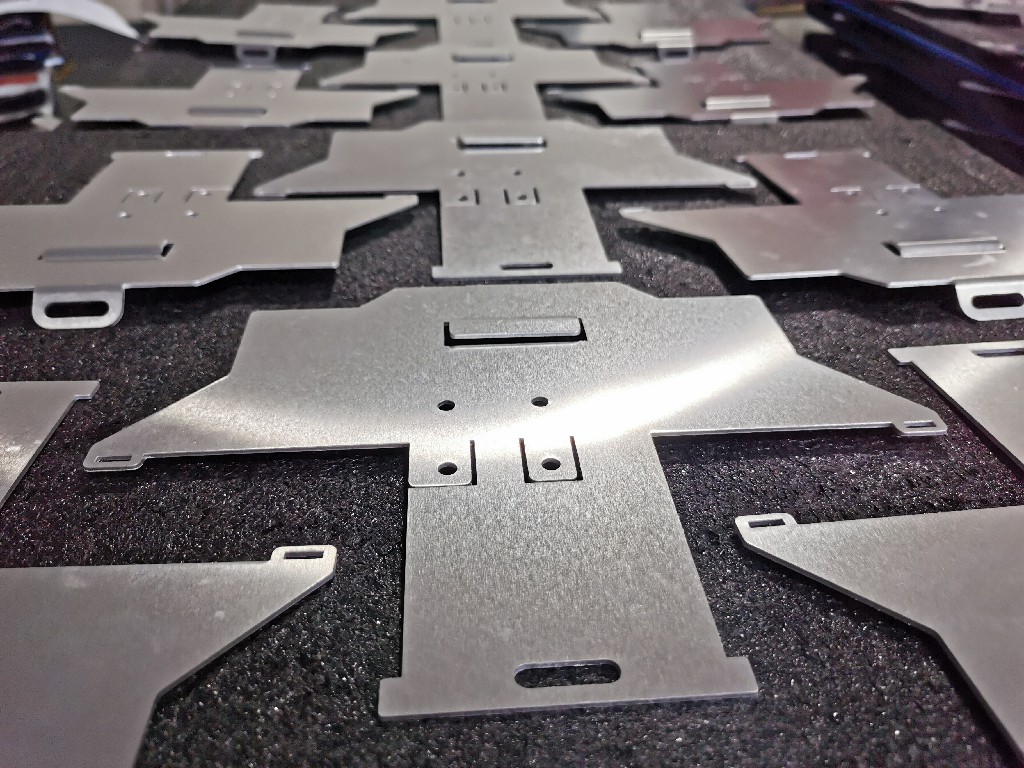
Table of Contents:
- 1. Introduction to Sheet Metal Fabrication
- 2. Tools and Equipment
- 3. Material Selection
- 4. Cutting and Shearing
- 5. Bending and Forming
- 6. Joining and Welding
- 7. Finishing and Surface Treatments
- 8. Assembly and Fastening
- 9. Quality Control and Inspection
- 10. Design Considerations
- 11. Cost Estimation
- 12. Common Sheet Metal Fabrication Projects
1. Introduction to Sheet Metal Fabrication
1.1 Definition and Overview
Sheet metal fabrication is a versatile and highly utilized metalworking process that involves cutting, bending, shaping, and assembling sheet metal into various products and components. Sheet metal, typically referred to as metal that is thinner than a metal plate, is widely used in industries such as automotive, aerospace, construction, electronics, and more. The process of sheet metal fabrication can range from simple tasks like forming a bracket to complex projects like manufacturing car body panels.
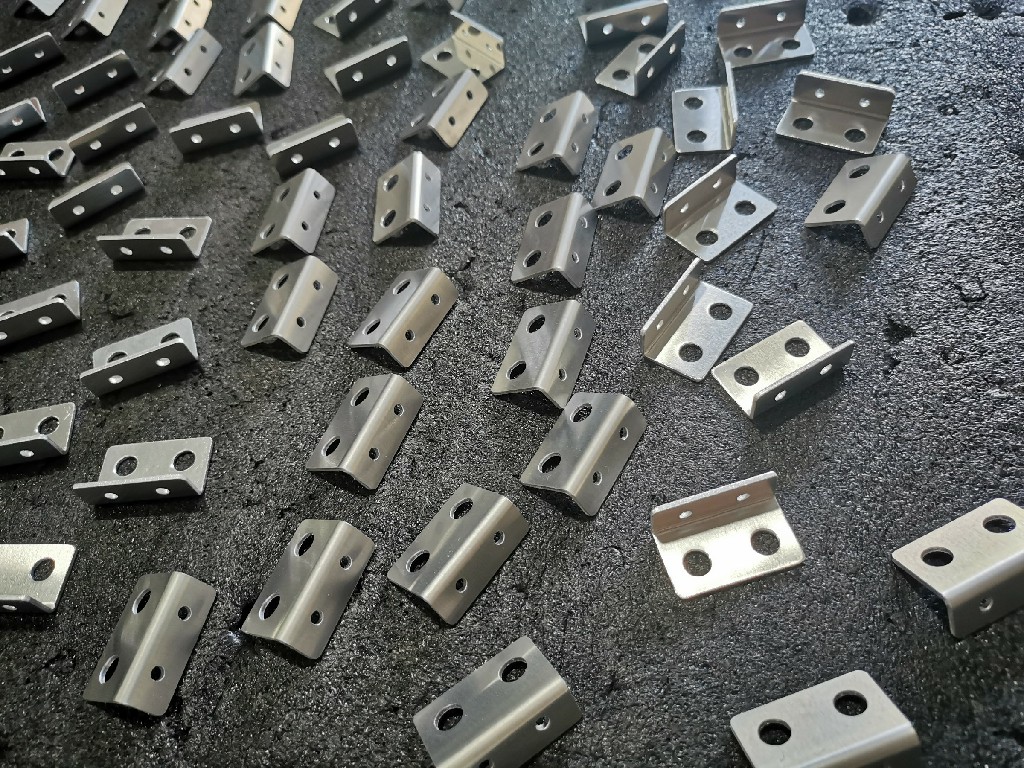
1.2 Advantages and Applications
Sheet metal fabrication offers numerous advantages, making it a preferred choice in many industries. Key advantages include:
Cost-Efficiency: Sheet metal is often more affordable than other materials like solid blocks of metal, making it cost-effective for mass production.
High Strength: Despite its thinness, sheet metal can exhibit remarkable strength and durability.
Versatility: It can be formed into various shapes and used for a wide range of applications, from small components to large structures.
Quick Turnaround: Sheet metal fabrication processes are often fast, allowing for rapid production.
Applications of sheet metal fabrication are extensive and include manufacturing:
Automotive Parts: Such as chassis components, panels, and exhaust systems.
Electronics: Enclosures for computers, appliances, and electrical equipment.
Construction: Roofing, siding, and structural components.
Aerospace: Aircraft components and engine parts.
Medical Equipment: Cabinets, trays, and specialized components.
2. Tools and Equipment
Sheet metal fabrication requires a variety of tools and equipment to cut, shape, and assemble the metal. These tools can be broadly categorized into basic, advanced, and safety equipment.
2.1 Basic Tools
2.1.1 Measuring Tools
Tape Measure: Essential for measuring and marking dimensions accurately.
Combination Square: Used to check and mark 90-degree angles.
2.1.2 Cutting Tools
Snips: Hand shears for cutting straight lines or curves in sheet metal.
Nibblers: Used to cut small and intricate shapes.
Hacksaw: A manual saw with fine teeth for cutting metal.
2.1.3 Bending and Shaping Tools
Bench Vise: Holds the metal in place during bending and shaping.
Mallets and Hammers: Used for shaping metal.
Anvil: Provides a flat surface for bending and shaping operations.
2.1.4 Fastening Tools
Screws, Bolts, and Nuts: Used to join sheet metal components.
Riveting Tools: Including rivet guns for creating strong, permanent connections.
Adhesives: Glues or adhesives for bonding sheet metal.
2.1.5 Finishing Tools
Files: Used for deburring and smoothing rough edges.
Sandpaper and Sanding Blocks: For refining the surface finish.
Wire Brushes: Used for cleaning and surface preparation.
2.2 Advanced Tools
2.2.1 Cutting Equipment
Plasma Cutters: Utilize ionized gas to cut sheet metal with high precision.
Laser Cutters: Employ laser beams for extremely precise cutting.
Waterjet Cutters: Use a high-pressure stream of water mixed with abrasive materials to cut metal.
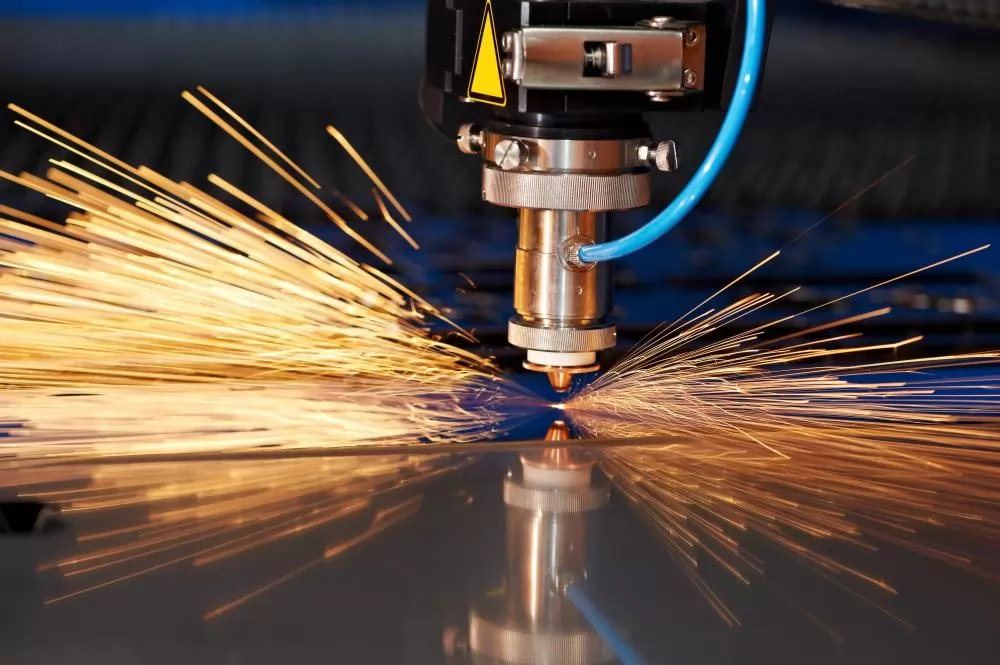
2.2.2 Bending Equipment
Press Brakes: Powerful machines that bend sheet metal with high accuracy.
Roll Forming Machines: Used for rolling and curving sheet metal.
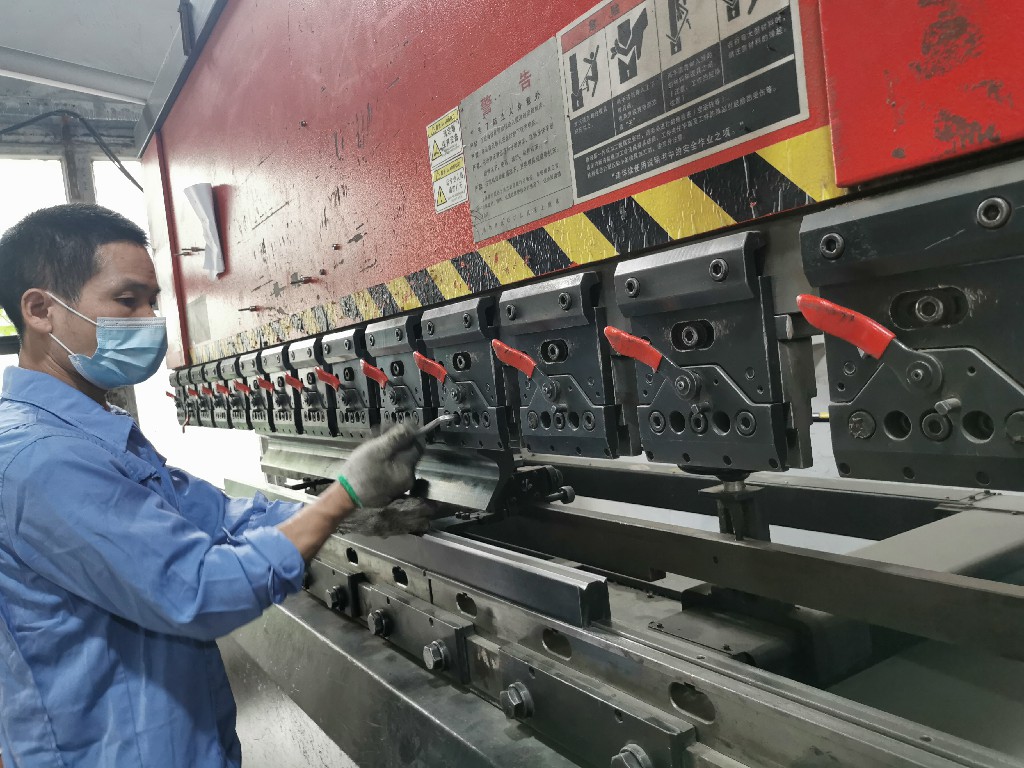
2.2.3 Welding Equipment
TIG Welders (Tungsten Inert Gas): Ideal for high-quality, precise welding.
MIG Welders (Metal Inert Gas): Suitable for fast welding applications.
Spot Welders: Join two or more sheets of metal together using electric resistance.
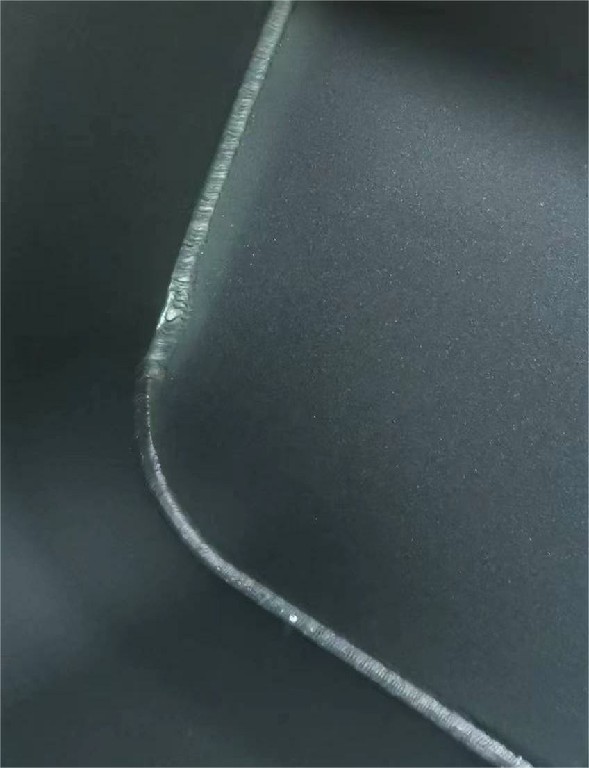
2.2.4 CNC Machinery
CNC Punch Presses: Automated machines that can punch holes, emboss, or cut patterns in sheet metal.
CNC Plasma Cutters: Computer-controlled machines that cut complex shapes with high precision.
2.3 Safety Equipment
Safety is paramount due to the potential hazards involved. Safety equipment includes:
Safety Glasses: Protect eyes from metal shards and debris.
Hearing Protection: Earplugs or earmuffs to guard against noise from machinery.
Gloves: Protect hands from sharp edges and hot metal.
Respirators: To prevent inhaling harmful fumes during welding or cutting.
Welding Helmets: Shield the face and eyes from bright welding arcs.
Protective Clothing: Coveralls or flame-resistant garments for overall protection.
Proper training in the use of these tools and equipment, as well as adherence to safety protocols, is essential to ensure the well-being of workers and the quality of the fabricated products.
3. Material Selection
Choosing the right sheet metal is a crucial step. The choice of material depends on the specific application, desired properties, and budget constraints. Here’s a breakdown of the key considerations:
3.1 Choosing the Right Sheet Metal
Sheet metal can be fabricated from various materials, each with its unique properties and applications. Common types of sheet metal materials include:
Carbon Steel: Widely used due to its affordability and strength. Ideal for structural components, automotive parts, and general applications. Common types include Q235, Q245.
Stainless Steel: Offers corrosion resistance and is commonly used in the food industry, medical equipment, and outdoor applications.Common types include 304, 316.
Cold Rolled Steel(CRS): Cold rolled steel is essentially hot rolled steel that has gone through an additional rolling process at room temperature.
Cold Galvanized Steel: Cold galvanized steel has a zinc coating painted to the steel surface to protect it from corrosion.
Aluminum: Aluminum sheet metal is known for its lightweight properties, corrosion resistance, and conductivity, making it popular in aerospace and automotive industries.
Aluminum 5052: Offers good corrosion resistance and is lightweight, making it suitable for marine and architectural applications.
Aluminum 6061: Known for its high strength and weldability, often used in aerospace and automotive industries.
Aluminum 1100: Highly ductile and ideal for forming processes, often used in sheet metal work where deep drawing is required.
Copper: Copper sheet metal offers excellent electrical conductivity and is often used in electrical applications and decorative elements.
Brass: Brass sheet metal is a corrosion-resistant alloy of copper and zinc, used in applications like musical instruments and ornamental components.
Titanium: Titanium sheet metal is known for its high strength-to-weight ratio and corrosion resistance, making it suitable for aerospace and medical devices.

Understanding the properties of these materials is crucial when selecting the right sheet metal for a specific project, taking into account factors like strength, weight, corrosion resistance, and cost. View all the sheet metal materials ECOREPRAP provides here.
3.2 Thickness and Gauge Considerations
Sheet metal thickness is measured in gauges, with a lower gauge number indicating thicker material. The choice of thickness depends on the application:
Light Gauge: Thin materials (e.g., 30-gauge) are suitable for applications where weight is critical, such as automotive body panels and electronics enclosures.
Medium Gauge: Medium thickness (e.g., 16-gauge) is often used for components requiring a balance of strength and weight, like brackets and ductwork.
Heavy Gauge: Thick materials (e.g., 10-gauge or thicker) are used in structural applications where strength and durability are paramount.
The selection of the appropriate gauge ensures that the sheet metal can withstand the intended loads and structural requirements.

3.3 Material Finishes
Material finishes enhance the appearance and performance of sheet metal. Common finishes include:
Mill Finish: The metal in its natural state, with no additional treatment. Often used for structural components.

Anodizing: An electrochemical process that creates a protective layer on aluminum, enhancing corrosion resistance and providing color options.
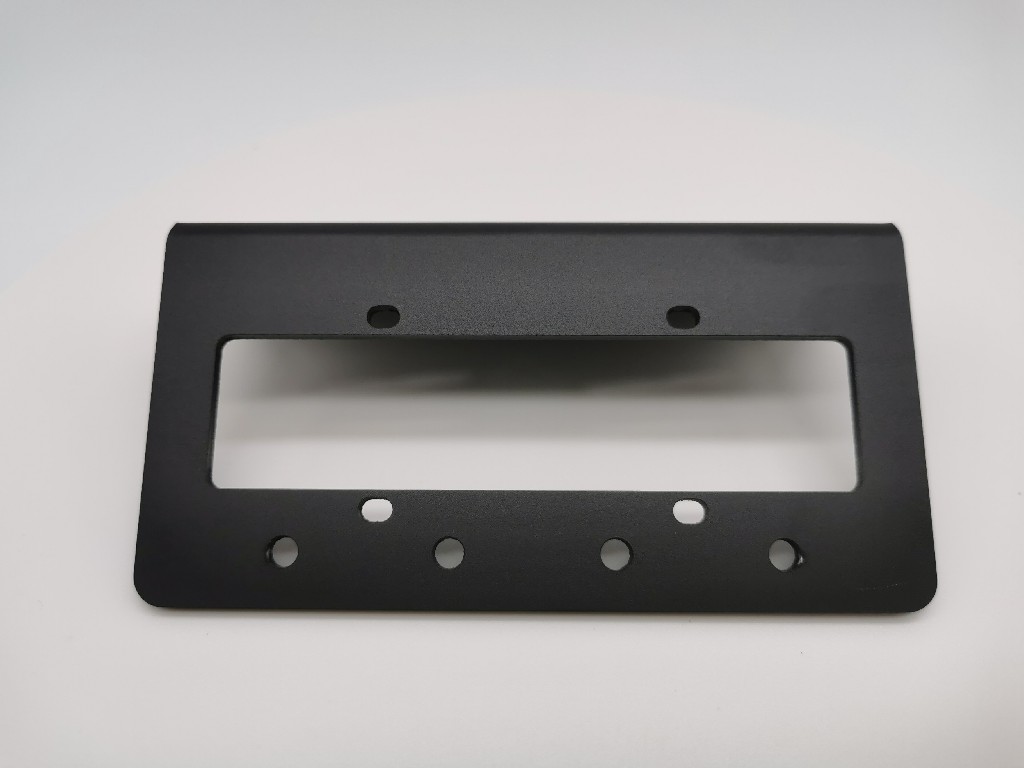
Painting and Powder Coating: Applied to protect the metal from corrosion and for decorative purposes. Powder coating is more environmentally friendly.
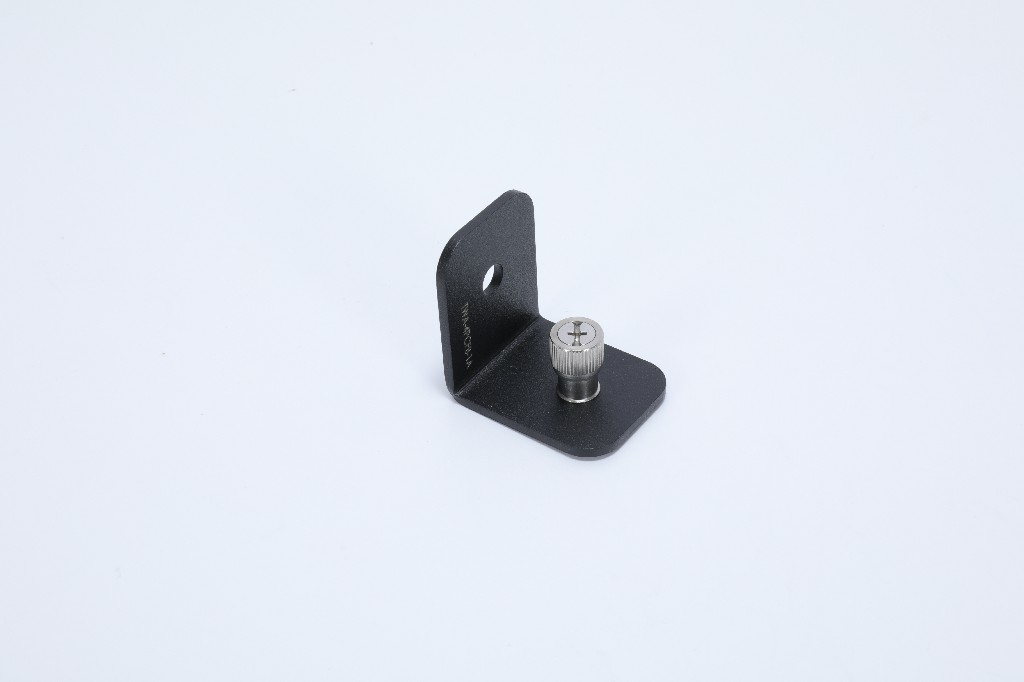
Plating: Electroplating with metals like nickel, chrome, or zinc to enhance appearance and provide corrosion resistance. View all the surface finishes ECOREPRAP provides here.

The choice of finish depends on the desired appearance, corrosion resistance, and the intended environment of the fabricated product.
4. Cutting and Shearing
Cutting and shearing are fundamental processes, shaping the material to the required dimensions and shapes. Different methods are employed, depending on the complexity of the cuts and the precision needed.
4.1 Hand Shears
Hand shears are simple yet effective tools for cutting sheet metal. They come in various forms, including:
Straight-Cut Shears: Used for straight-line cuts, they resemble large scissors and are suitable for relatively thin sheets.
Snips: Snips come in different designs, including straight, left-cut, and right-cut models, and are ideal for cutting curves and intricate shapes.
Compound Leverage Shears: These shears provide extra cutting power, making them suitable for thicker metals.
Hand shears are advantageous for their portability and affordability, making them a common choice for small-scale or on-site sheet metal cutting.
4.2 Power Shears
Power shears are electric or pneumatic tools that offer increased cutting capacity and precision. They include:
Electric Shears: Electric-powered shears are suitable for various thicknesses of sheet metal. They provide quicker and more consistent cuts compared to hand tools.
Pneumatic Shears: These shears use compressed air to cut through sheet metal, making them versatile and suitable for industrial applications.
Power shears are ideal for jobs that require efficiency and precision, as well as when working with thicker sheet metals.
4.3 Laser Cutting
Laser cutting is a highly precise and automated method for cutting sheet metal. It employs a focused laser beam to melt or vaporize the material along the cutting path. Key advantages of laser cutting include:
High Precision: Laser cutting can achieve extremely intricate and precise cuts with minimal material waste.
Speed: It’s a fast process, making it ideal for high-volume production.
Clean Cuts: Laser cutting leaves minimal burrs and requires little to no finishing work.
Laser cutting is widely used in industries like aerospace, automotive, and electronics for intricate and precise cuts on various materials, including steel, aluminum, and more.
4.4 Waterjet Cutting
Waterjet cutting uses a high-pressure stream of water mixed with abrasive particles to cut through sheet metal. This method offers several benefits:
No Heat-Affected Zone: Waterjet cutting is a cold cutting process, meaning it doesn’t generate heat that can distort the material.
Versatility: It can cut a wide range of materials, from metals to composites and plastics.
Environmentally Friendly: Waterjet cutting doesn’t produce hazardous fumes or waste.
Waterjet cutting is suitable for cutting materials that are sensitive to heat and for applications where precision and a clean edge are essential, such as in the aerospace and architectural industries.
Each of these cutting and shearing methods has its advantages and is chosen based on factors like material type, thickness, required precision, and project scale. Understanding the strengths and limitations of these techniques is crucial for successful sheet metal fabrication.
5. Bending and Forming
Bending and forming are essential processes, allowing sheet metal to take on various shapes and configurations. Different techniques are employed, depending on the complexity of the bend and the precision required.
5.1 Manual Bending Techniques
Manual bending techniques involve the use of basic hand tools and equipment to create bends and shapes in sheet metal. Common methods include:
Brake Press: This manual device is used for making simple bends by clamping the sheet metal between a straight edge and a bending leaf or beam, allowing for precise angle adjustments.
Bar Folder: A bar folder consists of a pivoting clamping bar that bends the sheet metal over an edge. It’s ideal for creating long, straight bends.
Hammer and Anvil: Skilled artisans use a hammer and anvil to manually shape the metal by hammering it along the edge of the anvil. This technique is suitable for complex and custom shapes but requires significant craftsmanship.
Manual bending techniques are cost-effective and suitable for smaller-scale projects or prototypes. They offer flexibility but are limited in terms of precision and repeatability.
5.2 Press Brake Bending
Press brake bending is a highly accurate and versatile method for bending sheet metal. It involves the use of a press brake machine, which consists of a hydraulic or mechanical press and a set of dies and tools. Key advantages of press brake bending include:
High Precision: Press brakes can create accurate, repeatable bends with tight tolerances.
Versatility: They can handle various bend angles, shapes, and sheet metal thicknesses.
Efficiency: Press brake machines can perform multiple bends in a single setup.
Press brake bending is widely used in industries such as automotive, aerospace, and manufacturing for producing complex components with precision.
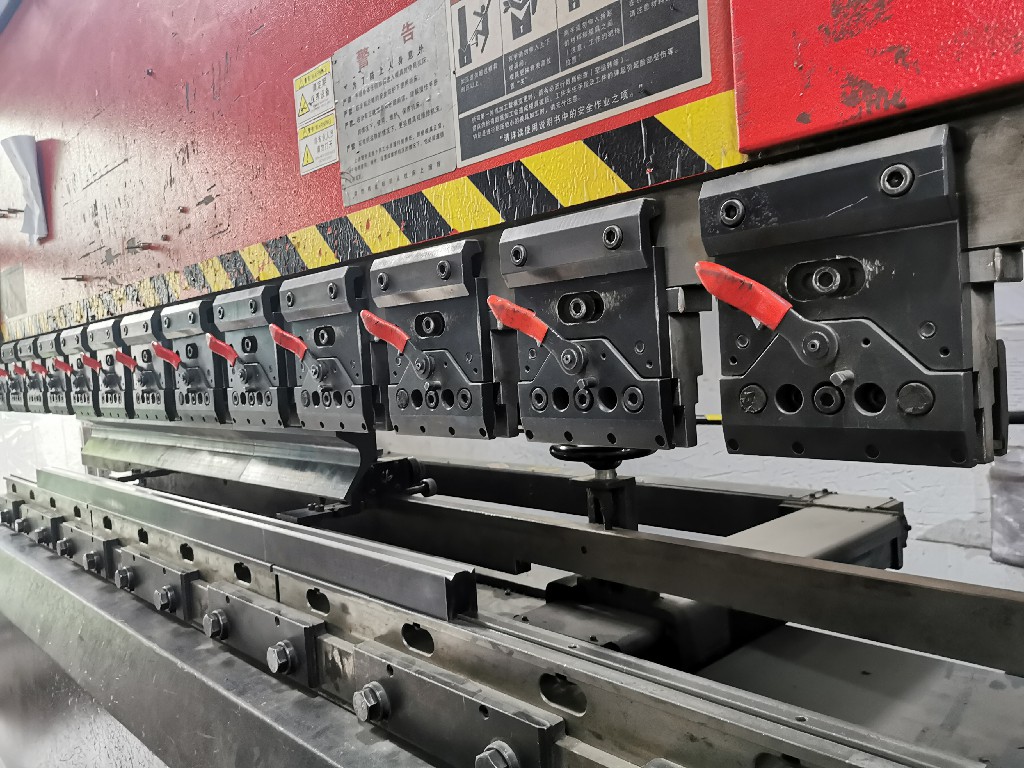
5.3 Roll Bending
Roll bending, also known as plate rolling, is a technique used to create curves and cylindrical shapes in sheet metal. This method involves passing the sheet metal between a set of rollers. Key features of roll bending include:
Forming Cylindrical Shapes: Roll bending is ideal for creating cylindrical or conical shapes, such as pipes, tubes, and tanks.
Incremental Bending: The sheet metal is bent incrementally as it passes through the rollers, allowing for precise control.
Variable Radii: Different rollers can be used to achieve various radii and curvatures.
Roll bending is commonly used in industries like architecture, shipbuilding, and HVAC for creating rounded or curved components.
5.4 Tube and Pipe Bending
Tube and pipe bending focuses on creating bends in cylindrical structures made of metal, such as tubes and pipes. Specialized machines are used, known as tube and pipe benders, to achieve precise bends. Key aspects of tube and pipe bending include:
Mandrel Bending: A mandrel is inserted inside the tube or pipe to prevent it from collapsing during bending, ensuring the integrity of the inner surface.
CNC Control: Many modern tube and pipe benders are equipped with computer numerical control (CNC) for high precision.
Multiple Radii: Tube and pipe benders can create bends with different radii and angles.
Tube and pipe bending is vital in industries such as plumbing, construction, and automotive manufacturing, where bent tubing is common in applications like exhaust systems, handrails, and hydraulic systems.
The choice of bending and forming technique depends on the specific requirements of the project, including the desired shape, precision, and the type and thickness of the sheet metal being used. Each method offers unique advantages and is selected based on the intricacies of the fabrication task.
6. Joining and Welding
Joining and welding are critical processes, allowing multiple pieces of sheet metal to be securely connected. Different methods are employed based on factors such as material type, joint design, and project requirements.
6.1 Spot Welding
Spot welding is a widely used method for joining sheet metal components. It involves the use of an electric current to create a weld at a specific point (the “spot”). Key characteristics of spot welding include:
Speed: Spot welding is a fast process, making it suitable for high-volume production.
Minimal Material Distortion: The heat-affected zone is localized, reducing the risk of warping or distortion in the surrounding material.
Low Cost: It is a cost-effective method due to its simplicity and efficiency.
Spot welding is commonly used in the automotive and appliance industries for joining sheet metal components like car body panels and metal cabinets.
6.2 TIG Welding (Tungsten Inert Gas)
TIG welding is a high-precision welding method that uses a non-consumable tungsten electrode and an inert gas (typically argon) to create a clean and precise weld. Key features of TIG welding include:
High Precision: TIG welding produces precise, controlled welds with minimal spatter.
Clean Welds: The absence of flux or slag results in clean and aesthetically pleasing welds.
Versatility: TIG welding can be used on a wide range of metals, including stainless steel, aluminum, and copper.
TIG welding is commonly used in industries where the quality of the weld is paramount, such as aerospace, nuclear, and high-purity applications.
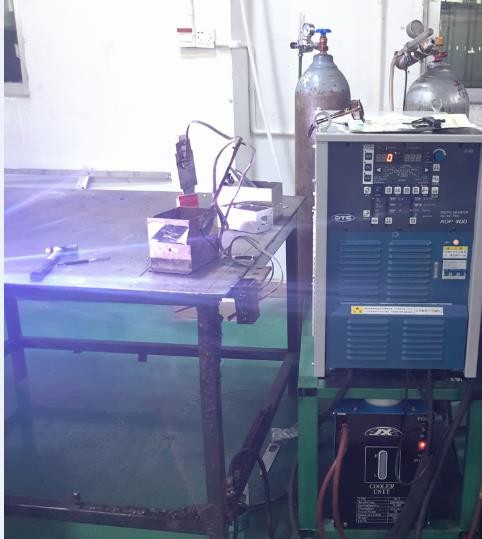
6.3 MIG Welding (Metal Inert Gas)
MIG welding, also known as Gas Metal Arc Welding (GMAW), is a semi-automatic or automatic welding method that uses a consumable electrode and a shielding gas, typically a mix of argon and CO2. Key aspects of MIG welding include:
Speed: MIG welding is faster than TIG welding, making it suitable for high-production applications.
Ease of Use: It is relatively easy to learn and use, making it a popular choice for general fabrication.
High Deposition Rates: MIG welding can lay down a lot of weld metal quickly.
MIG welding is widely used in industries like automotive, construction, and manufacturing for joining sheet metal components, structural elements, and more.
6.4 Resistance Welding
Resistance welding is a method that uses the resistance of the materials to electric current flow to generate heat and create a weld. Key features of resistance welding include:
Spot Welding: Similar to traditional spot welding but often used for thin sheets and smaller components.
Seam Welding: Suitable for creating continuous welds along seams or edges of sheet metal.
Flash Welding: Used for joining similar or dissimilar metals, creating a strong and clean weld.
Resistance welding is employed in various industries, including automotive, aerospace, and electronics, for its ability to create strong and consistent welds.
The choice of welding method depends on the materials being joined, the required strength of the weld, the desired aesthetics, and the production volume. Understanding the characteristics and applications of each welding method is crucial for achieving successful and reliable welds.
7. Finishing and Surface Treatments
Finishing and surface treatments are essential to enhance the appearance, durability, and performance of the fabricated parts. These methods are applied to achieve specific functional and aesthetic goals.
7.1 Deburring and Edge Finishing
Deburring: The process of removing sharp or rough edges, known as burrs, left on the sheet metal after cutting or forming. Deburring is essential to improve safety and aesthetics. Common methods include manual filing, tumbling, or vibratory finishing.
Edge Finishing: Involves chamfering or rounding the edges for safety and aesthetic purposes. Beveling machines or hand tools are often used to create smooth, rounded edges.
7.2 Grinding and Sanding
Grinding: This process is used to refine the surface of sheet metal, remove surface imperfections, or achieve a specific finish. Grinding wheels or belts with abrasive materials are used to grind down the material.
Sanding: Sanding is a similar process but uses sandpaper or abrasive pads to smoothen the surface. It is often employed to prepare the surface for paint or other coatings.
7.3 Paint and Powder Coating
Painting: The application of paint to sheet metal not only adds color but also provides protection against corrosion. Primer coats are often applied first, followed by one or more finish coats. Painting can be done manually or using automated spray systems.
Powder Coating: In this method, a dry powder is electrostatically applied to the sheet metal surface. The part is then heated, causing the powder to melt and form a hard, durable coating. Powder coating is known for its resistance to chipping, scratching, and fading.
7.4 Anodizing and Plating
Anodizing: Anodizing is a process typically used on aluminum sheet metal. It involves creating an oxide layer on the metal’s surface, enhancing corrosion resistance and providing an attractive finish. The anodized layer can be clear or dyed to achieve various colors.
Plating: Electroplating is a method where a thin layer of metal (such as nickel, chrome, or zinc) is deposited onto the surface of the sheet metal. Plating enhances the appearance, provides corrosion resistance, and can offer other properties like hardness or conductivity.
The choice of finishing and surface treatment methods depends on factors such as the intended use of the part, the desired aesthetics, and the material being used. Proper surface treatment not only improves the visual appeal of sheet metal products but also extends their lifespan and functionality.
8. Assembly and Fastening
Assembling and fastening are critical steps, allowing multiple components to be securely joined together. Different methods are employed based on the project’s specific requirements, the materials being used, and the intended application.
8.1 Riveting
Riveting: Rivets are mechanical fasteners used to permanently join sheet metal components together. The riveting process involves inserting a rivet (a cylindrical piece of metal) through pre-drilled holes in the components and then deforming or “upsetting” the end of the rivet to secure the parts in place. Rivets are available in various materials and types, such as solid, blind, or pop rivets.
Riveting is a robust and reliable method, often used in applications where a strong and durable connection is required, such as in aerospace, construction, and automotive industries.
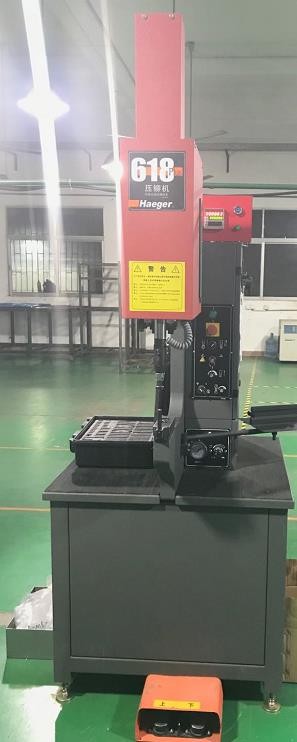
8.2 Screws and Bolts
Screws and Bolts: These are threaded fasteners used to secure sheet metal components by creating a clamping force. Self-tapping screws are commonly used in sheet metal applications as they can create their threads as they are driven into the material. Bolts, on the other hand, require a pre-drilled hole and a nut for assembly.
Screws and bolts are versatile and allow for disassembly and reassembly. They are widely used in industries such as manufacturing, automotive, and construction.
8.3 Adhesives and Bonding
Adhesives and Bonding: Adhesives, such as epoxy, cyanoacrylate, and structural adhesives, are used to bond sheet metal components together. The adhesive is applied between the mating surfaces, and a curing process (usually chemical or thermal) is used to set the adhesive, creating a strong bond.
Bonding is suitable for applications where a clean and aesthetically pleasing finish is desired, as it eliminates the need for visible fasteners. It is commonly used in the manufacturing of appliances, electronics, and aircraft components.
8.4 Clinching
Clinching: Clinching is a method that mechanically joins sheet metal components without the need for additional fasteners. It involves deforming the metal using a punch and die to create a mechanical interlock between the layers of sheet metal.
Clinching is known for its speed, cost-effectiveness, and reliability. It is often used in industries like automotive and electronics for joining sheet metal parts quickly and securely.
The choice of assembly and fastening method depends on factors such as the strength of the joint required, the ease of assembly, and whether disassembly is needed. Different methods offer various advantages, making them suitable for a range of sheet metal fabrication applications.
9. Quality Control and Inspection
Quality control and inspection are crucial steps in the sheet metal fabrication process to ensure that the final products meet specified standards and performance requirements. Various methods are employed to assess different aspects of the fabricated parts.
9.1 Dimensional Inspection
Dimensional Inspection: This involves the precise measurement of the finished parts to ensure that they meet the specified dimensions and tolerances. Common methods include:
Calipers: Used for measuring lengths, diameters, and depths.
Micrometers: For precise measurements, typically for thickness, outside diameters, and inside diameters.
Coordinate Measuring Machines (CMM): Computer-controlled systems that accurately measure complex shapes and dimensions.
Dimensional inspection is essential to guarantee that the final products align with design specifications, ensuring proper fit and functionality.
9.2 Weld and Joint Inspection
Weld and Joint Inspection: This process assesses the quality of welds and joints to ensure their integrity and reliability. Various methods are used, including:
Visual Inspection: Inspectors visually examine welds and joints for defects such as cracks, porosity, or incomplete fusion.
Ultrasonic Testing (UT): UT uses high-frequency sound waves to detect defects in welds and joints by analyzing the reflection of sound waves.
Radiographic Testing (RT): X-rays or gamma rays are used to create an image of the interior of welds and joints to identify defects.
Proper weld and joint inspection is crucial in applications where structural integrity is critical, such as in aerospace, automotive, and construction.
9.3 Surface Finish Inspection
Surface Finish Inspection: This step assesses the quality of the surface finish to ensure it meets the specified requirements. Methods include:
Visual Inspection: Inspectors examine the surface for scratches, pits, and imperfections.
Surface Profilometers: Instruments that measure the roughness or smoothness of the surface.
Gloss Meters: Used to measure the gloss or shine of the surface.
Surface finish inspection is crucial for applications where aesthetics and functionality are both important, such as in consumer electronics and architectural components.
9.4 Non-Destructive Testing (NDT)
Non-Destructive Testing (NDT): NDT methods are used to inspect materials and components without causing damage. Some common NDT techniques include:
Magnetic Particle Testing (MT): Detects surface and subsurface defects in ferromagnetic materials by applying a magnetic field and using magnetic particles.
Liquid Penetrant Testing (PT): Reveals surface defects in non-porous materials by applying a liquid penetrant that seeps into cracks and flaws.
Eddy Current Testing (ET): Uses electromagnetic fields to detect surface and near-surface defects in conductive materials.
NDT methods are valuable for assessing the integrity of sheet metal components without compromising their structural or functional properties. They are widely used in industries where safety and reliability are paramount, such as aerospace, nuclear, and oil and gas.
Effective quality control and inspection procedures are essential to ensure the safety, performance, and reliability of sheet metal components. Different inspection methods are used to verify dimensional accuracy, weld quality, surface finish, and overall product quality.
10. Design Considerations
10.1 Design for Manufacturability
Material Choice: Opt for sheet metal materials that are readily available, easy to work with, and cost-effective.
Simplified Geometries: Minimize complex shapes and features to reduce production complexities.
Standard Components: Utilize standardized sizes and components to reduce custom tooling requirements.
Reduction of Bends: Minimize the number of bends in the design to simplify fabrication and improve accuracy.
10.2 Tolerances and Allowances
Tolerance Specifications: Define tight yet achievable tolerances for dimensions to ensure precise part fabrication.
Clearance and Gap Allowances: Include allowances for clearances and gaps to accommodate material expansion and contraction due to temperature changes.
Fit and Finish Requirements: Specify the desired fit and finish, considering the intended aesthetics and functionality.
10.3 Prototyping and Testing
Prototyping: Create physical prototypes of the sheet metal components to validate the design, identify potential issues, and assess functionality and fit.
Testing: Conduct structural integrity tests, material performance tests, and functionality tests on prototypes to ensure that components meet required standards and specifications.
11. Cost Estimation
11.1 Material Cost
Material Selection: Choose the most suitable and cost-effective sheet metal material for the application.
Scrap Allowances: Account for potential waste generated during the cutting process when sheet metal components are produced.
Material Finishes: Consider the cost of finishes like anodizing or painting if required for corrosion resistance or aesthetics.
11.2 Labor Cost
Labor Hours: Estimate the time required for fabricating the sheet metal components, considering factors like complexity, number of welds, and bending operations.
Skill Level: Labor costs can vary based on the skill level of the workforce involved in fabrication.
Efficiency: Efficient designs that reduce labor-intensive processes can help control labor costs.
11.3 Equipment and Tooling Cost
Machinery Costs: Consider the cost of machinery used, such as press brakes, laser cutters, and welding equipment.
Tooling Expenses: Account for the cost of tooling, such as dies and molds for bending and stamping operations.
Maintenance and Energy: Include ongoing expenses related to machine maintenance and energy consumption in the overall cost estimation.
Effective design considerations and accurate cost estimation are integral to the success of sheet metal fabrication projects, ensuring that the final products are both manufacturable and economically viable.
12. Common Sheet Metal Fabrication Projects
Sheet metal fabrication is a versatile process that can be applied to a wide range of projects. Here are some common examples:
12.1 Custom Brackets
Custom Brackets: Custom brackets are often needed to securely mount various components or equipment. These brackets can be designed to precise specifications, ensuring a perfect fit. Common applications include mounting brackets for electronics, shelving systems, and machinery. The design and fabrication of brackets involve careful consideration of load-bearing capacity, material choice, and attachment methods.
12.2 Enclosures and Cabinets
Enclosures and Cabinets: Sheet metal is frequently used to create enclosures and cabinets for various purposes. These enclosures can house electrical components, control panels, or sensitive equipment. Design considerations include proper ventilation, cable management, and access for maintenance. The sheet metal may be finished with paint or powder coating for protection and aesthetics.
12.3 Automotive Parts
Automotive Parts: Sheet metal fabrication plays a significant role in the automotive industry. It is used to produce a wide range of components, including body panels, chassis parts, brackets, and engine components. Precision and durability are crucial in this sector, and various fabrication processes, including stamping and welding, are employed to meet automotive industry standards.
12.4 HVAC Ductwork
HVAC Ductwork: Heating, ventilation, and air conditioning (HVAC) systems rely on sheet metal ductwork to distribute conditioned air throughout buildings. Ductwork fabrication involves creating straight ducts, transitions, elbows, and more to accommodate complex building layouts. The design focuses on optimizing airflow, energy efficiency, and noise reduction. Materials used for ductwork must meet specific HVAC industry standards for air quality.
These common sheet metal fabrication projects demonstrate the versatility of the process in various industries and applications. Each project requires careful consideration of design, material selection, and fabrication techniques to ensure that the final product meets its intended purpose and performance standards.
Sheet metal fabrication is continuously evolving to meet the demands of various industries and address environmental concerns. Automation, digital tools, and sustainable practices are shaping the future of this field, making it more efficient, precise, and eco-friendly. Case studies demonstrate the practical applications of sheet metal fabrication in real-world scenarios, from prototyping to large-scale production.

